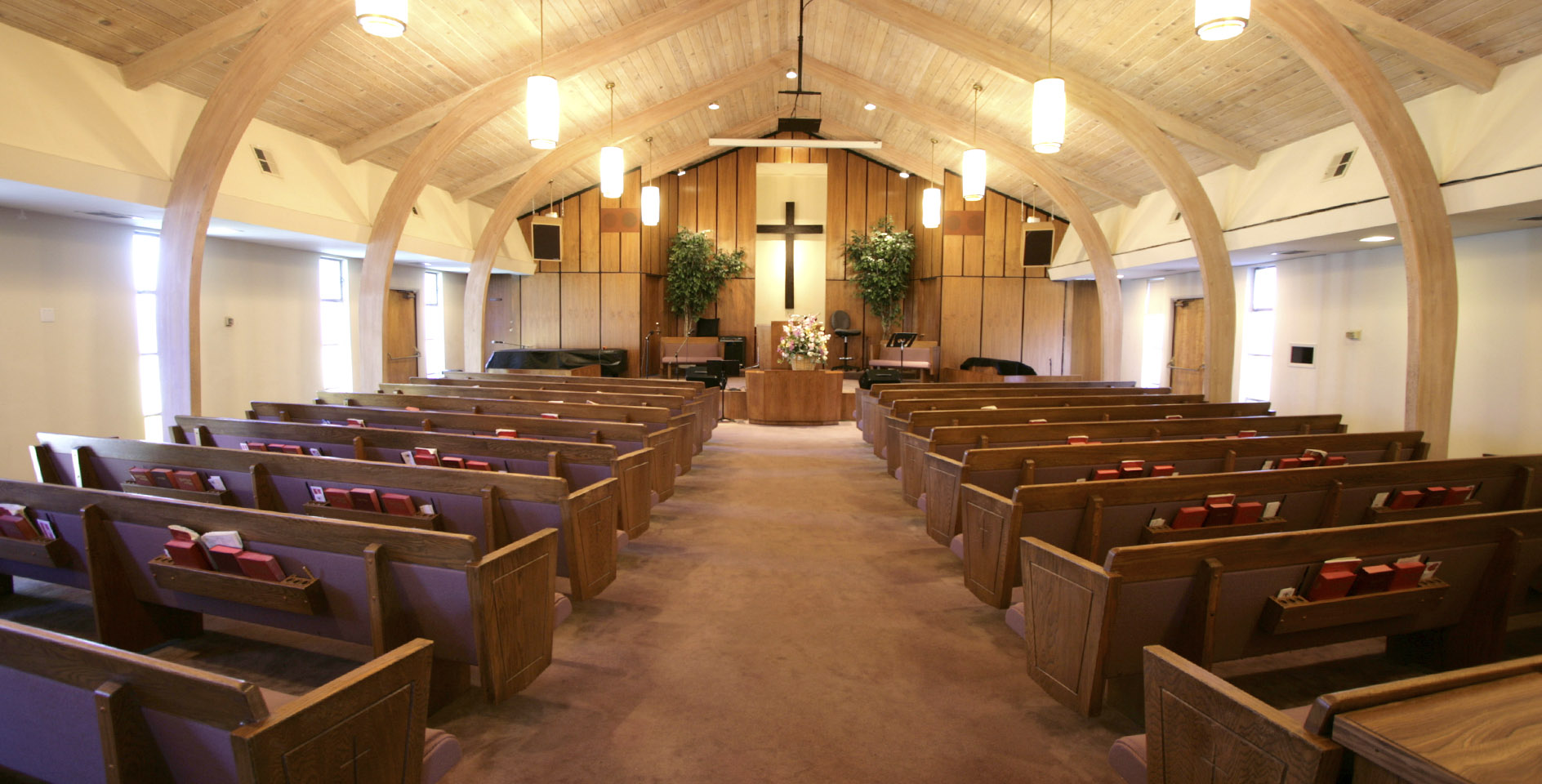Editor’s note: John Stott would have turned 100 this year. And to celebrate his life and legacy, we wanted to share this article about Stott’s life from Tim Chester’s book Stott on the Christian Life.
1. Stott had multiple careers.
I wonder who you think John Stott is. You may know him as the evangelist who preached at student missions around the world. You may know him as a careful exegete whose contributions to the Bible Speaks Today series remain invaluable guides. You may know him from his preaching and the way he let the text itself shape the sermon so that you felt God himself addressing you. You may know him as a defender of evangelical orthodoxy against the threat of liberal theology. You may know him for his commitment to the Church of England and his famous confrontation with Martyn Lloyd-Jones after Lloyd-Jones had urged British evangelicals to leave their denominations to create a pan-evangelical body. You may know him as an advocate of social involvement who exhorted Christians to serve within the secular world. You may know him as a supporter of Christians leaders from the Two-Thirds World and the founder of the Langham Partnership. But did you know about all these facets of his ministry? It can sometimes feel as if Stott lived a dozen lives.
2. The main influence on Stott’s preaching was someone he never met.
The culture into which Stott was converted was one where preaching was only loosely related to the Bible. Yet a few years later, his preaching was electrifying congregations with sermons that gained their power from the text itself. Stott had spent the intervening years at university in Cambridge, and I believe it was a Cambridge preacher who transformed his preaching: Charles Simeon, the vicar of Holy Trinity. But Stott never met Simeon because Simeon was preaching in the 19th century—a century before Stott went to Cambridge. Stott met Simeon only through Simeon’s writings. “Simeon’s uncompromising commitment to Scripture,” Stott once wrote, “captured my imagination and has held it ever since.” In his London apartment Stott had various pictures on his wall of some of the places that had been significant in his life, but he had only one portrait—a portrait of Simeon.
3. Stott belonged to only one congregation.
Stott’s father was a doctor and lived in Harley Street, the area of London traditionally associated with the medical profession. The nearest parish church was All Souls, Langham Place, and it was there that Stott was taken as child. Stott spent his school days at boarding school and it was at Rugby School that he was converted. After graduating from Cambridge University, he was ordained and became a curate, or trainee pastor, back at All Souls under the then-rector Harold Earnshaw-Smith. But within months, Earnshaw-Smith had suffered a heart attack and Stott was largely left in charge. Five years later Earnshaw-Smith died and in September 1950, Stott became the new rector. Though not entirely without precedent, it was unusual for a curate to move straight to the senior role in the same parish. Stott remained at All Souls as Rector and then Rector Emeritus for the rest of his ministry. Only in the last few months of his life did he move to a retirement home outside London.
4. Stott was a successful student evangelist.
In November 1952, Stott returned to Cambridge, the university where he had studied, to be the main speaker at the triennial evangelistic campaign of its Christian union. Attendance was so great that at the final meeting, people had to be turned away. For the next twenty-five years, Stott spoke at numerous university missions all round the world before returning to Cambridge for his final university mission in 1977. The substance of his addresses, honed in many different contexts, became his book Basic Christianity, first published in 1958. It has sold over 2.5 million copies and been translated into over fifty languages, becoming the standard evangelistic book for a generation of Christians.
5. Stott was a pioneer in lay mobilization.
It’s pretty normal for churches today to organize people into home groups and mobilize them for evangelism. But Stott was one of the pioneers of this. In the 1950s and 1960s he began applying the approaches he had learned from student missions to the local church. In the 1950 issue of the All Souls church magazine that announced his appointment, Stott wrote: “The task [of evangelism] is beyond the power of the clergy. . . . There are only two alternatives. Either the task will not be done, or we must do it together, a task force of Ministers and people thoroughly trained and harnessed as a team for evangelism.” Stott introduced a regular guest service to which people could invite friends and launched a six-month training program (with a written exam at the end). Later he published his ideas along with their rationale in his book One People: Clergy and Laity in God’s Church (1969).
6. Stott was a major influence in changing evangelical views of sanctification.
I’m the chair of the Keswick Convention. Originally founded in 1875, it’s one of the oldest conferences in the world. People often associate the Convention with the “holiness movement”—a movement characterized by the belief that the power of sin can be overcome through an act of surrender to God. It was a dominant view throughout evangelicalism in the first half of the 20th century. This association of the Keswick Convention with the “holiness movement” is kind of correct. It’s just fifty-five years out of date! For in 1965, John Stott addressed the Convention, expounding Romans 5-8 in his characteristic clear, careful fashion.
The Convention had never, in fact, been monolithic and it was beginning to change. But Stott’s address marked a decisive turning point that impacted not only the Convention but evangelicalism more broadly. His key point was that, while our union with Christ makes sin incongruous, it does not make it impossible. It’s because sin is not impossible that Paul calls on us to count ourselves dead to sin—to live in a way consistent with our new identity in Christ (Romans 6:11). In The Contemporary Christian Stott describes sanctification as a process involving “ruthless repudiation” and “unconditional surrender.”
7. Stott wrote the Lausanne Covenant.
Over 2,500 delegates met from the Lausanne Congress in 1974 in an attempt galvanize evangelicals toward the task of world evangelization. But Lausanne also did much to provide theological coherence to the evangelical movement and was an important milestone in placing social action firmly on its agenda. The resulting Lausanne Covenant is a key document in the history of 20th-century evangelicalism. Though agreed by the Congress as a whole, it was Stott who had the unenviable task of bringing the perspectives expressed in the Congress together in one document.
8. On the one hand . . . on the other hand . . .
Stott believed in what he called “BBC”—“balanced biblical Christianity.” He refused to polarize if he could avoid doing so, but neither did he opt for a docile version of the middle ground. We need to develop this balanced, biblical Christianity, Stott wrote, “by combining truths which complement one another and not separating what God has joined.” So a common feature of his writing are the twins phrases: “On the one hand . . . ” and “on the other hand . . .”. He would identify two contrasting approaches before combining the best of both.
For example, he would often refer to “holy worldliness.” He rejected two extremes: living in a religious ghetto that ignores the surrounding world on the one hand and being shaped by the world around us on the other hand. Instead he combines both: a deep involvement in the world for the sake of mission combined with an uncompromising commitment to God’s Word.
9. Stott saw over 2,500 different species of birds.
Stott was a passionate ornithologist. At first his interest in natural history was focused on butterflies. But, when a cushion landed on his butterfly collection in the midst of a sibling squabble, he switched to birds. At school he started a natural history club. Later, when he started being asked to speak overseas, the church council at All Souls agreed to this wider ministry as long as Stott always added on a few days of bird-watching to his trips. A life-time later, Stott had spent time bird-watching on every continent—ticking off the final continent when friends gave a bird-watching trip to Antarctica for his 70th birthday. By the end of his life he had seen over 2,500 different species (out of an estimated total of 9,000).
10. Stott’s great ambition was Christ.
A TV reporter once asked Stott, “You’ve had a brilliant academic career; first at Cambridge, Rector at twenty-nine, Chaplain to the Queen; what is your ambition now?” Stott replied, “To be more like Jesus.” Stott’s classic presentation of the gospel in Basic Christianity starts not with humanity’s need (which forms part 2) or with Christ’s saving work (which forms part 3) but with the person of Christ. This is what Stott found compelling about Christianity. As we see Christ’s glory, we want to serve him; as we see his beauty, we want to imitate him. This is the repeated refrain of one of Stott’s final books, The Radical Disciple:
If Christian maturity is maturity in our relationship with God, in which we worship, trust and obey him, then the clearer our vision of Christ, the more convinced we become that he is worthy of our commitment.
So if we want to develop truly Christian maturity, we need above all a fresh and true vision of Jesus Christ.
If only we could see Jesus in the fullness of who he is and what he has done! Why then surely we should see how worthy he is of our wholehearted allegiance, and faith, love and obedience would be drawn out from us and we would grow into maturity. Nothing is more important for mature Christian discipleship than a fresh, clear, true vision of the authentic Jesus.
For the discipleship principle is clear: the poorer our vision of Christ, the poorer out discipleship will be, whereas the richer our vision of Christ, the richer our discipleship will be.
Content adapted from Stott on the Christian Life by Tim Chester. This article first appeared on Crossway.org; used with permission.









